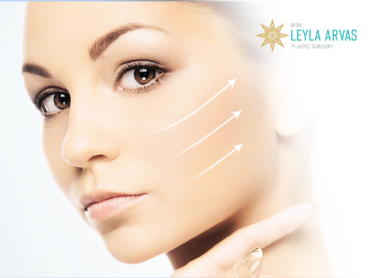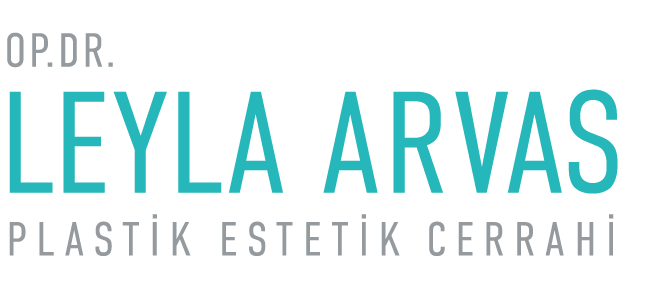
Cheek fillers are performed to restore the ideal shape of the face, eliminate the signs of aging, and create a rejuvenated and vibrant skin appearance. Cheek fillers compensate for the loss of volume and sagging in the cheeks using natural substances. This procedure results in youthful, radiant, voluminous, and lifted cheeks. Cheek fillers provide a non-surgical solution that is easy to apply and offers quick results without any risks.
What are Cheek Fillers?
Various deformations can occur in the cheek area due to factors such as aging, significant weight fluctuations, genetic characteristics, or previous illnesses. Wrinkles, lines, volume loss, sagging, and dryness in the cheeks can make a person appear older and tired. Cheek fillers are a medical procedure that tackles these issues. By applying fillers beneath the skin, collagen production is stimulated, resulting in a youthful, smooth, and glowing skin appearance.
Who Can Benefit from Cheek Fillers?
Cheek fillers can be applied to both men and women who are dissatisfied with their cheek area. The following conditions must be met for the application of cheek fillers:
- Being 18 years or older.
- Not being pregnant or in the breastfeeding period.
- Not having allergies or chronic illnesses.
- Not having a risk for surgery or not desiring surgery.
- Experiencing effects such as wrinkles, sagging, or volume loss in the cheek area.
- Having dry skin in the cheek area.
- Having a thin and bony appearance in the cheeks.
What is the Ideal Cheek Shape?
The ideal cheek is determined by examining the individual’s face shape, the ratio of eyes, nose, and mouth, and adding the necessary volume to the cheek area accordingly. The Golden Ratio technique is used to calculate the ratio between the length and width of the face, which should be around 1.618. Based on this measurement, the ideal size and volume of the cheek are determined, and the amount of filler to be used is decided.
What are the Benefits of Cheek Fillers?
Cheek fillers offer the following benefits:
- The cheek area is brought into proportion according to the Golden Ratio, resulting in an aesthetic and beautiful appearance.
- For individuals with thin and bony faces, the cheekbones are emphasized, and the cheek structure is created with an ideal volume.
- Effects such as wrinkles, sagging, and hollows in the cheeks are eliminated, resulting in smooth and youthful skin.
- Dryness and flaking in the cheeks are resolved, leading to moist and radiant skin.
- The procedure is performed without general anesthesia or incisions.
- Cheek fillers are easy to apply and provide quick results.
- Cheek fillers are cost-effective compared to cheek surgeries.
How are Cheek Fillers Applied?
There are two types of cheek fillers. The first one is Dermal Fillers, which consist of Hyaluronic Acid and other natural substances. Hyaluronic Acid replenishes the collagen loss that causes the skin to sag, providing volume and radiance to the skin. Hyaluronic Acid is a water-based substance that is completely natural and safe. The other type of cheek filler is Fat Injection. Fat Injection involves using excess fat from the individual’s own body for the filling procedure. For this procedure, the person should have localized excess fat and no contraindications for liposuction surgery. First, liposuction is performed to extract the fat. The collected fat is then prepared for the filling procedure and used in the cheek area.
The application process is the same for both Dermal Fillers and Fat Injection. They are injected into the necessary areas of the cheek using a fine-tipped syringe. Before the procedure, the cheek area is numbed with a local anesthetic cream. There is no pain during the procedure. The filler is injected gradually to the application area. After all the filler is injected, the cheek area is shaped manually. Cheek fillers can be applied to both cheeks or only one side, depending on the need. The procedure takes approximately 15-20 minutes.
What to Consider After Cheek Fillers?
After cheek fillers, individuals can immediately return to their daily activities. It is important to follow the doctor’s recommendations to ensure the effectiveness of the fillers. Therefore:
- The cheek area should be protected from any impact or trauma.
- Drinking plenty of water and avoiding strenuous activities is recommended.
- The application area should not be rubbed, scratched, or massaged.
- Applying cold compresses can help reduce swelling and redness.
- Avoiding hot baths, steam rooms, and saunas is advised.
- Sun exposure, swimming pools, and the sea should be avoided.
- Applying cosmetics to the treated area should be avoided.
- Sleeping on the back is recommended instead of the stomach or sideways.
When Does Cheek Fillers Take Effect?
Cheek fillers take effect immediately after the procedure. However, the full effect may not be visible due to swelling, edema, and redness in the cheek area. These effects subside within one week, allowing the fillers to settle into place.
Can Cheek Fillers Lift the Face?
Cheek fillers are highly effective in lifting sagging and drooping faces. Through the use of Hyaluronic Acid and Fat Injection, the cheek area is lifted, and volume is restored. Cheekbones become more prominent, and the face appears lifted.
Are Cheek Fillers Permanent?
The longevity of cheek fillers varies from person to person. Factors such as metabolism, genetic characteristics, skincare routine, nutrition, and sleep patterns can affect the duration of the fillers’ effect. On average, Dermal Fillers applied to the cheek area last for 1-1.5 years, while Fat Fillers can last for 2-3 years. When the effect of the fillers diminishes, the cheek appearance reverts to its previous state. If desired, the fillers can be reapplied to extend the duration of their effect.
Do Cheek Fillers Make a Person Look Fat?
It is crucial to apply cheek fillers in the appropriate dosage to achieve an aesthetic facial appearance. Experienced plastic surgeons or dermatologists pay attention to the balance between the face and cheeks, ensuring that the fillers are applied in a way that best suits the individual. Professionally administered fillers do not make a person look fat or bulky.
Is There Pain After Cheek Fillers?
Cheek fillers are performed under local anesthesia, so there is no pain during the procedure. Numbness, tingling, or itching may be experienced in the cheek area after the fillers are injected. These effects are caused by the needle insertion points and typically subside within a few days. There is no pain or discomfort after the fillers are applied, so there is no need for painkillers.
Are Cheek Fillers Risky?
The risks associated with cheek fillers are determined by the doctor during the examination. Cheek fillers are not applied to individuals with identified risks. If there are no contraindications and the person is suitable for the procedure, cheek fillers do not pose any harm. Since the filler materials are FDA-approved, they do not pose any risk to human health and do not cause cancer, tumors, or growths.
Can Men Get Cheek Fillers?
There is an increasing demand for cheek fillers among men as well. The shaping and application points of cheek fillers in men differ from those in women. The aim is
to create a more masculine and angular face and cheek contour. The filler application and shaping are done accordingly.
Where Can Cheek Fillers be Performed?
To avoid negative aesthetic outcomes and health issues, cheek fillers should be performed by expert doctors. Plastic surgeons and dermatologists are authorized to perform cheek fillers. Therefore, it is important to avoid getting fillers from individuals who are not doctors. It is also crucial to ensure that the fillers used are FDA-approved and applied in institutions approved by the Ministry of Health.
What are the Prices of Cheek Fillers?
The prices of cheek fillers depend on factors such as the type and quantity of fillers used and the experience of the doctor performing the procedure. To provide price information, the deformations in the cheek area should be examined, and the type of filler to be used should be determined. Compared to cheek surgeries, cheek fillers are quite affordable.
